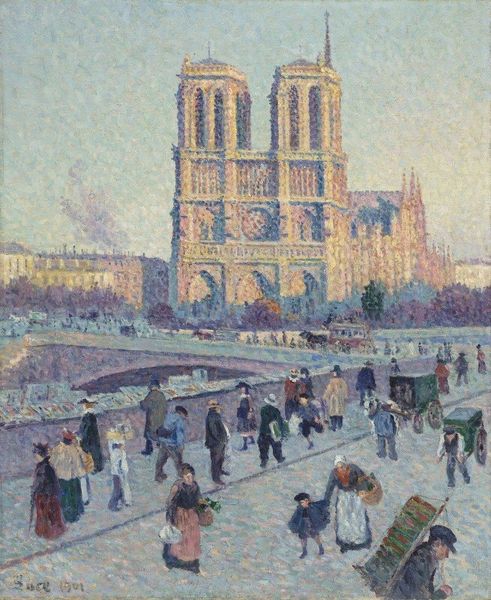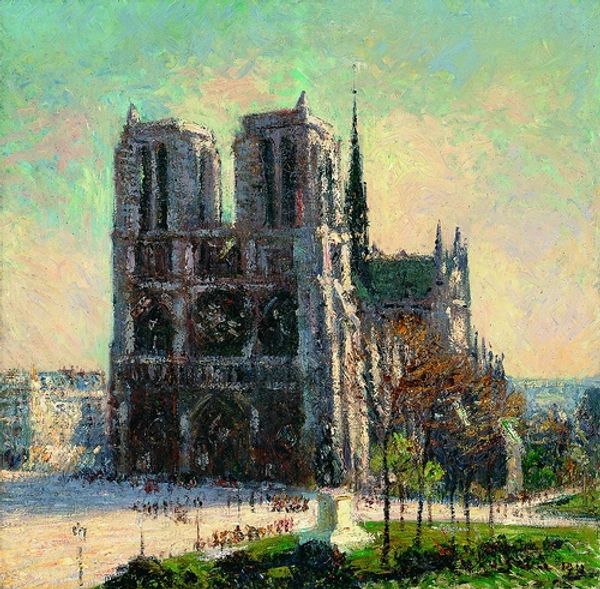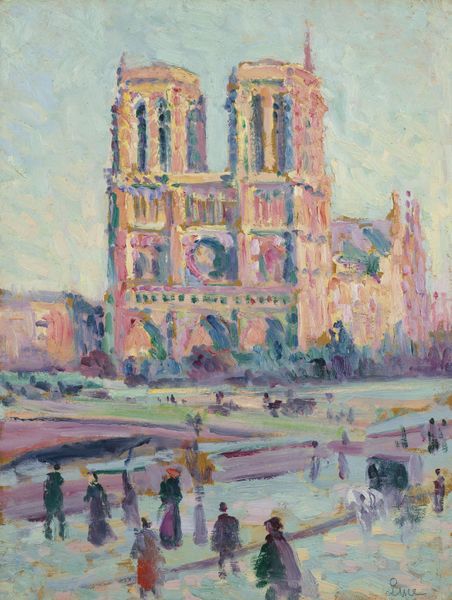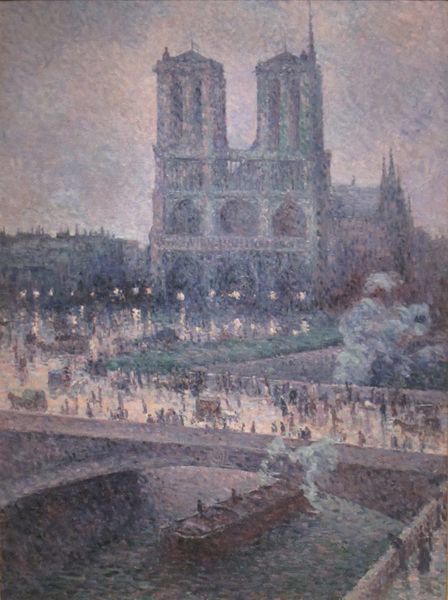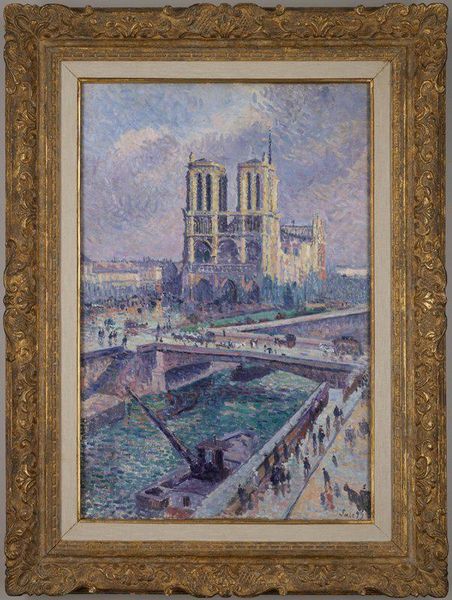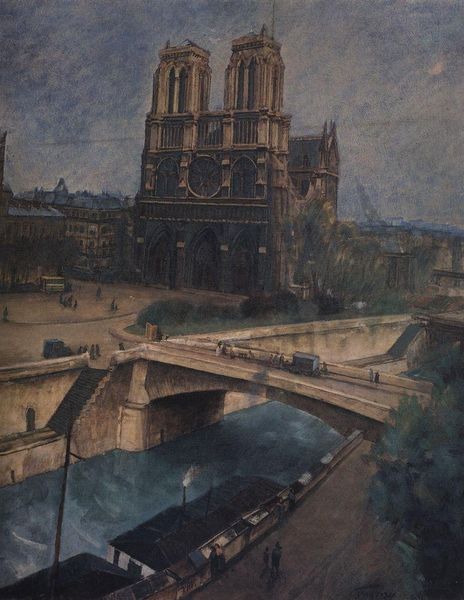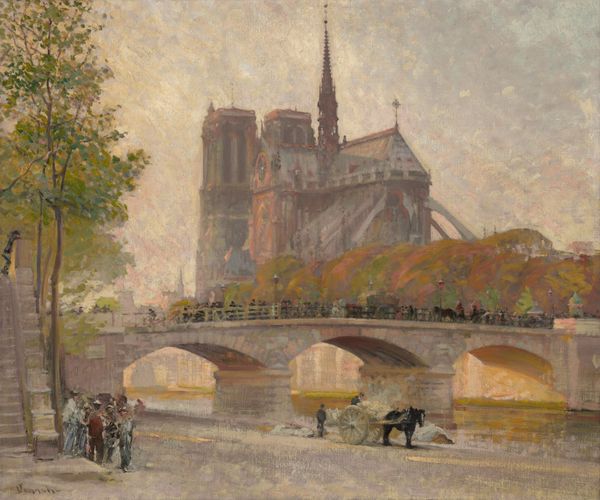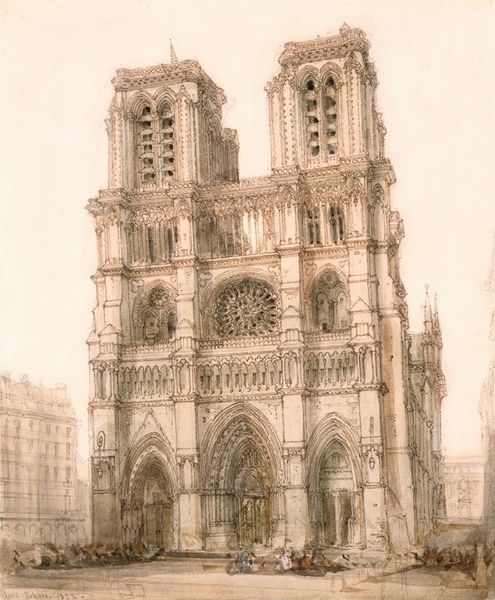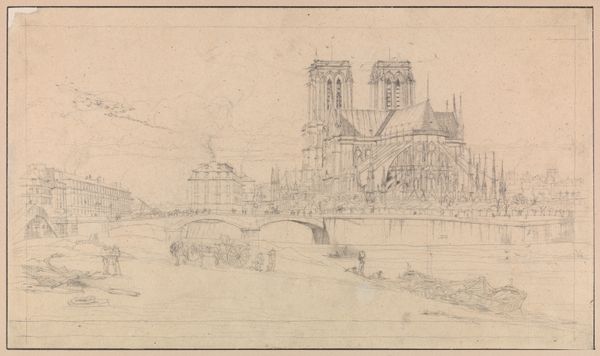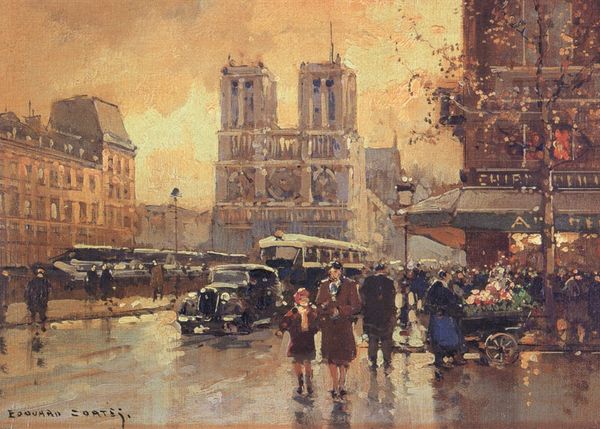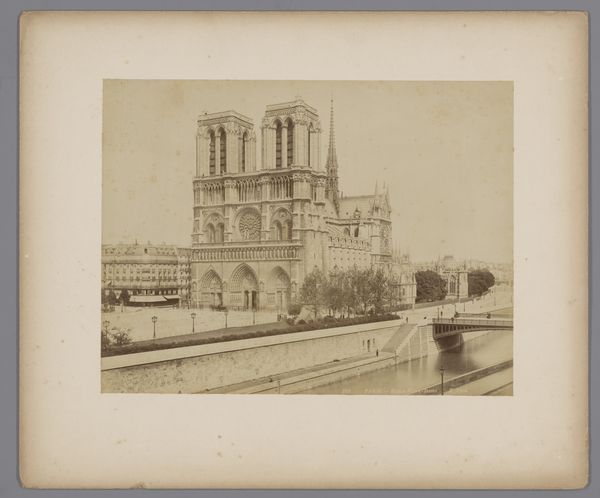
Dimensions: 116 x 81.3 cm
Copyright: Public domain
Curator: Maximilien Luce offers us his interpretation of *Notre Dame De Paris*, an oil painting dating to around 1900. Editor: The chromatic intensity really grabs me—those shimmering blues and oranges. It creates such a vibrant atmosphere! Curator: Note how Luce employs a modified Pointillist technique here, where discrete dots of color blend optically to create the image. It really captures the atmospheric effects of light. The bridge creates a horizontal rhythm, contrasting with the vertical thrust of the cathedral. Editor: I see that. This wasn't too long after the Franco-Prussian War. And thinking about it through the lens of post-war reconstruction, it positions the cathedral as not just a religious symbol but one of resilience—a beacon, wouldn’t you say? In painting Notre Dame in this way, in this time period, doesn’t Luce offer the idea of social renewal? Curator: Social renewal, certainly, within the framework of late 19th century French society, I would imagine. You rightly mention its religious importance; beyond this, it reflects the artist’s keen interest in capturing architectural majesty through the manipulation of pure pigment and tonal values, right? The overall effect showcases architectural grandeur. Editor: Well, for whom was this grandeur, this architectural marvel, accessible, and how might that connect to the figures depicted along the quays, caught up in their everyday tasks? This is a perspective not from within its hallowed halls, but from without, an inclusion of working-class lives. Curator: I appreciate that tension, that dialectic. I will say Luce's emphasis on luminosity is particularly striking. The way the light interacts with the stone of Notre Dame—it gives a sense of immutability despite social fluxes, I think. Editor: Indeed. Looking closely reveals a complex conversation about permanence and change. It urges us to reflect not only on artistic composition, but urban experience through different social stratifications. Curator: This image will now remain with me as a study of the dual qualities within and without. Editor: For me, as a potent reminder of the power of art to document both monumental change and subtle nuances within public space.
Comments
No comments
Be the first to comment and join the conversation on the ultimate creative platform.
